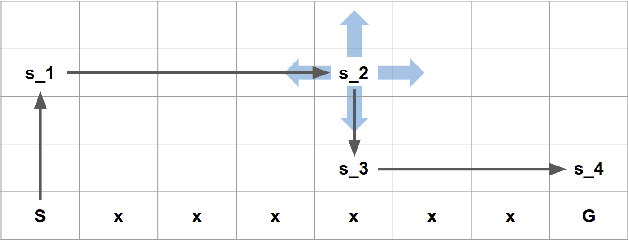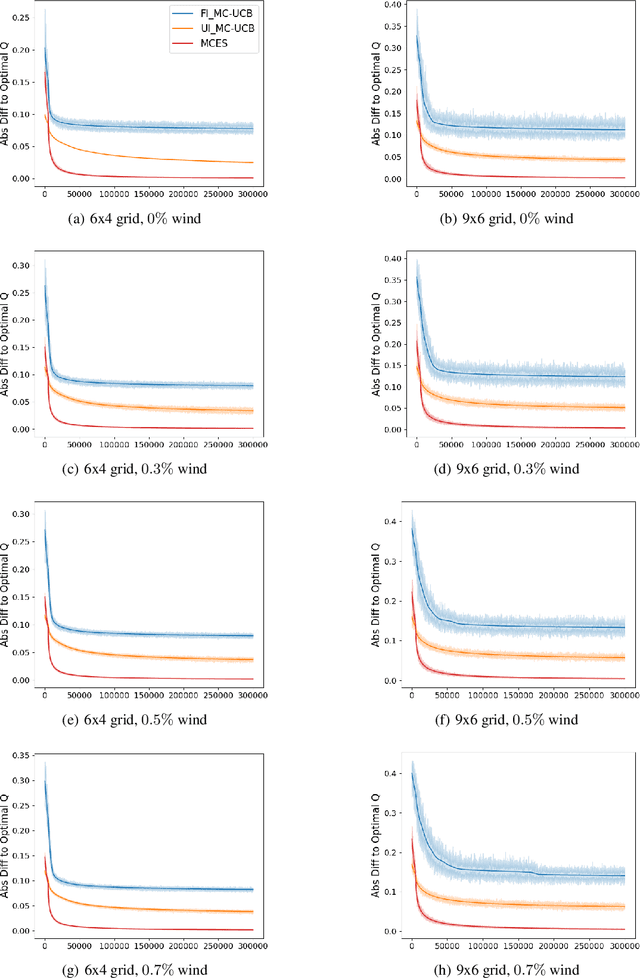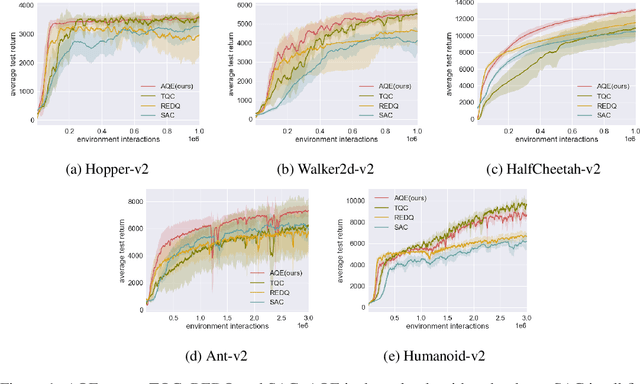Che Wang
Demonstrating Multi-Suction Item Picking at Scale via Multi-Modal Learning of Pick Success
Jun 12, 2025Abstract:This work demonstrates how autonomously learning aspects of robotic operation from sparsely-labeled, real-world data of deployed, engineered solutions at industrial scale can provide with solutions that achieve improved performance. Specifically, it focuses on multi-suction robot picking and performs a comprehensive study on the application of multi-modal visual encoders for predicting the success of candidate robotic picks. Picking diverse items from unstructured piles is an important and challenging task for robot manipulation in real-world settings, such as warehouses. Methods for picking from clutter must work for an open set of items while simultaneously meeting latency constraints to achieve high throughput. The demonstrated approach utilizes multiple input modalities, such as RGB, depth and semantic segmentation, to estimate the quality of candidate multi-suction picks. The strategy is trained from real-world item picking data, with a combination of multimodal pretrain and finetune. The manuscript provides comprehensive experimental evaluation performed over a large item-picking dataset, an item-picking dataset targeted to include partial occlusions, and a package-picking dataset, which focuses on containers, such as boxes and envelopes, instead of unpackaged items. The evaluation measures performance for different item configurations, pick scenes, and object types. Ablations help to understand the effects of in-domain pretraining, the impact of different modalities and the importance of finetuning. These ablations reveal both the importance of training over multiple modalities but also the ability of models to learn during pretraining the relationship between modalities so that during finetuning and inference, only a subset of them can be used as input.
Bridging Synthetic-to-Real Gaps: Frequency-Aware Perturbation and Selection for Single-shot Multi-Parametric Mapping Reconstruction
Mar 05, 2025Abstract:Data-centric artificial intelligence (AI) has remarkably advanced medical imaging, with emerging methods using synthetic data to address data scarcity while introducing synthetic-to-real gaps. Unsupervised domain adaptation (UDA) shows promise in ground truth-scarce tasks, but its application in reconstruction remains underexplored. Although multiple overlapping-echo detachment (MOLED) achieves ultra-fast multi-parametric reconstruction, extending its application to various clinical scenarios, the quality suffers from deficiency in mitigating the domain gap, difficulty in maintaining structural integrity, and inadequacy in ensuring mapping accuracy. To resolve these issues, we proposed frequency-aware perturbation and selection (FPS), comprising Wasserstein distance-modulated frequency-aware perturbation (WDFP) and hierarchical frequency-aware selection network (HFSNet), which integrates frequency-aware adaptive selection (FAS), compact FAS (cFAS) and feature-aware architecture integration (FAI). Specifically, perturbation activates domain-invariant feature learning within uncertainty, while selection refines optimal solutions within perturbation, establishing a robust and closed-loop learning pathway. Extensive experiments on synthetic data, along with diverse real clinical cases from 5 healthy volunteers, 94 ischemic stroke patients, and 46 meningioma patients, demonstrate the superiority and clinical applicability of FPS. Furthermore, FPS is applied to diffusion tensor imaging (DTI), underscoring its versatility and potential for broader medical applications. The code is available at https://github.com/flyannie/FPS.
Evaluation of dynamic characteristics of power grid based on GNN and application on knowledge graph
Nov 28, 2023Abstract:A novel method for detecting faults in power grids using a graph neural network (GNN) has been developed, aimed at enhancing intelligent fault diagnosis in network operation and maintenance. This GNN-based approach identifies faulty nodes within the power grid through a specialized electrical feature extraction model coupled with a knowledge graph. Incorporating temporal data, the method leverages the status of nodes from preceding and subsequent time periods to aid in current fault detection. To validate the effectiveness of this GNN in extracting node features, a correlation analysis of the output features from each node within the neural network layer was conducted. The results from experiments show that this method can accurately locate fault nodes in simulated scenarios with a remarkable 99.53% accuracy. Additionally, the graph neural network's feature modeling allows for a qualitative examination of how faults spread across nodes, providing valuable insights for analyzing fault nodes.
Method for Text Entity Linking in Power Distribution Scheduling Oriented to Power Distribution Network Knowledge Graph
Nov 15, 2023Abstract:The proposed method for linking entities in power distribution dispatch texts to a power distribution network knowledge graph is based on a deep understanding of these networks. This method leverages the unique features of entities in both the power distribution network's knowledge graph and the dispatch texts, focusing on their semantic, phonetic, and syntactic characteristics. An enhanced model, the Lexical Semantic Feature-based Skip Convolutional Neural Network (LSF-SCNN), is utilized for effectively matching dispatch text entities with those in the knowledge graph. The efficacy of this model, compared to a control model, is evaluated through cross-validation methods in real-world power distribution dispatch scenarios. The results indicate that the LSF-SCNN model excels in accurately linking a variety of entity types, demonstrating high overall accuracy in entity linking when the process is conducted in English.
Pre-training with Synthetic Data Helps Offline Reinforcement Learning
Oct 06, 2023Abstract:Recently, it has been shown that for offline deep reinforcement learning (DRL), pre-training Decision Transformer with a large language corpus can improve downstream performance (Reid et al., 2022). A natural question to ask is whether this performance gain can only be achieved with language pre-training, or can be achieved with simpler pre-training schemes which do not involve language. In this paper, we first show that language is not essential for improved performance, and indeed pre-training with synthetic IID data for a small number of updates can match the performance gains from pre-training with a large language corpus; moreover, pre-training with data generated by a one-step Markov chain can further improve the performance. Inspired by these experimental results, we then consider pre-training Conservative Q-Learning (CQL), a popular offline DRL algorithm, which is Q-learning-based and typically employs a Multi-Layer Perceptron (MLP) backbone. Surprisingly, pre-training with simple synthetic data for a small number of updates can also improve CQL, providing consistent performance improvement on D4RL Gym locomotion datasets. The results of this paper not only illustrate the importance of pre-training for offline DRL but also show that the pre-training data can be synthetic and generated with remarkably simple mechanisms.
Reinforcement Learning with Automated Auxiliary Loss Search
Oct 12, 2022



Abstract:A good state representation is crucial to solving complicated reinforcement learning (RL) challenges. Many recent works focus on designing auxiliary losses for learning informative representations. Unfortunately, these handcrafted objectives rely heavily on expert knowledge and may be sub-optimal. In this paper, we propose a principled and universal method for learning better representations with auxiliary loss functions, named Automated Auxiliary Loss Search (A2LS), which automatically searches for top-performing auxiliary loss functions for RL. Specifically, based on the collected trajectory data, we define a general auxiliary loss space of size $7.5 \times 10^{20}$ and explore the space with an efficient evolutionary search strategy. Empirical results show that the discovered auxiliary loss (namely, A2-winner) significantly improves the performance on both high-dimensional (image) and low-dimensional (vector) unseen tasks with much higher efficiency, showing promising generalization ability to different settings and even different benchmark domains. We conduct a statistical analysis to reveal the relations between patterns of auxiliary losses and RL performance.
On the Convergence of Monte Carlo UCB for Random-Length Episodic MDPs
Sep 07, 2022



Abstract:In reinforcement learning, Monte Carlo algorithms update the Q function by averaging the episodic returns. In the Monte Carlo UCB (MC-UCB) algorithm, the action taken in each state is the action that maximizes the Q function plus a UCB exploration term, which biases the choice of actions to those that have been chosen less frequently. Although there has been significant work on establishing regret bounds for MC-UCB, most of that work has been focused on finite-horizon versions of the problem, for which each episode terminates after a constant number of steps. For such finite-horizon problems, the optimal policy depends both on the current state and the time within the episode. However, for many natural episodic problems, such as games like Go and Chess and robotic tasks, the episode is of random length and the optimal policy is stationary. For such environments, it is an open question whether the Q-function in MC-UCB will converge to the optimal Q function; we conjecture that, unlike Q-learning, it does not converge for all MDPs. We nevertheless show that for a large class of MDPs, which includes stochastic MDPs such as blackjack and deterministic MDPs such as Go, the Q-function in MC-UCB converges almost surely to the optimal Q function. An immediate corollary of this result is that it also converges almost surely for all finite-horizon MDPs. We also provide numerical experiments, providing further insights into MC-UCB.
VRL3: A Data-Driven Framework for Visual Deep Reinforcement Learning
Feb 17, 2022



Abstract:We propose a simple but powerful data-driven framework for solving highly challenging visual deep reinforcement learning (DRL) tasks. We analyze a number of major obstacles in taking a data-driven approach, and present a suite of design principles, training strategies, and critical insights about data-driven visual DRL. Our framework has three stages: in stage 1, we leverage non-RL datasets (e.g. ImageNet) to learn task-agnostic visual representations; in stage 2, we use offline RL data (e.g. a limited number of expert demonstrations) to convert the task-agnostic representations into more powerful task-specific representations; in stage 3, we fine-tune the agent with online RL. On a set of highly challenging hand manipulation tasks with sparse reward and realistic visual inputs, our framework learns 370%-1200% faster than the previous SOTA method while using an encoder that is 50 times smaller, fully demonstrating the potential of data-driven deep reinforcement learning.
Aggressive Q-Learning with Ensembles: Achieving Both High Sample Efficiency and High Asymptotic Performance
Nov 17, 2021



Abstract:Recently, Truncated Quantile Critics (TQC), using distributional representation of critics, was shown to provide state-of-the-art asymptotic training performance on all environments from the MuJoCo continuous control benchmark suite. Also recently, Randomized Ensemble Double Q-Learning (REDQ), using a high update-to-data ratio and target randomization, was shown to achieve high sample efficiency that is competitive with state-of-the-art model-based methods. In this paper, we propose a novel model-free algorithm, Aggressive Q-Learning with Ensembles (AQE), which improves the sample-efficiency performance of REDQ and the asymptotic performance of TQC, thereby providing overall state-of-the-art performance during all stages of training. Moreover, AQE is very simple, requiring neither distributional representation of critics nor target randomization.
Randomized Ensembled Double Q-Learning: Learning Fast Without a Model
Jan 15, 2021



Abstract:Using a high Update-To-Data (UTD) ratio, model-based methods have recently achieved much higher sample efficiency than previous model-free methods for continuous-action DRL benchmarks. In this paper, we introduce a simple model-free algorithm, Randomized Ensembled Double Q-Learning (REDQ), and show that its performance is just as good as, if not better than, a state-of-the-art model-based algorithm for the MuJoCo benchmark. Moreover, REDQ can achieve this performance using fewer parameters than the model-based method, and with less wall-clock run time. REDQ has three carefully integrated ingredients which allow it to achieve its high performance: (i) a UTD ratio >> 1; (ii) an ensemble of Q functions; (iii) in-target minimization across a random subset of Q functions from the ensemble. Through carefully designed experiments, we provide a detailed analysis of REDQ and related model-free algorithms. To our knowledge, REDQ is the first successful model-free DRL algorithm for continuous-action spaces using a UTD ratio >> 1.
 Add to Chrome
Add to Chrome Add to Firefox
Add to Firefox Add to Edge
Add to Edge